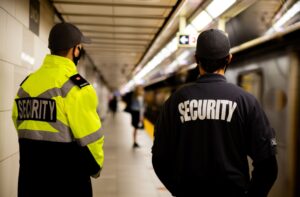If you’re planning to become a close protection officer, one of the first things you’ll need to know is how much it will cost to get your close protection licence. This licence is essential if you want to work legally in the close protection industry. Understanding the costs involved can help you budget and prepare for this important step in your career.
The costs of a close protection licence can vary, depending on several factors. These can include the training provider you choose, any additional courses or certifications you may need, and other related fees. Being aware of these costs upfront can save you from any unexpected surprises down the road.
In this article, we’ll break down the costs associated with obtaining a close protection licence. We’ll look at additional fees and expenses you may encounter, offer some tips for managing these costs effectively, and answer frequently asked questions to make the process clearer. Understanding these costs will help you make informed decisions and better prepare for your future in the close protection field.
Breakdown of Close Protection Licence Costs
When you’re looking into obtaining a close protection licence, the primary costs you’ll encounter involve the training course itself. The cost of a close protection training course can vary widely depending on the training provider. On average, you can expect to pay between £1,000 to £3,000 for a comprehensive course. This fee typically covers the training materials, classroom sessions, and practical exercises you’ll need to complete the course successfully.
After completing the training course, you’ll need to pay for the actual close protection licence. In the United Kingdom, the Security Industry Authority (SIA) handles the licensing, and the current cost for a close protection licence is £190. This fee is for the application process, and it’s a necessary step to work legally as a close protection officer. The licence is usually valid for three years, so you’ll need to renew it and pay the fee again before it expires.
There may also be additional costs involved if you choose to pursue specialised certifications or additional training modules. These extra credentials can give you an edge in the job market but can also add to the overall cost of getting licensed. Understanding these basic costs will help you budget effectively as you prepare for your career in close protection.
Additional Fees and Expenses
Besides the primary costs of the training course and the licence fee, there are several additional fees and expenses you should be aware of. One of the most common extra costs is travel and accommodation. If your training provider is not local, you may need to cover the cost of travelling to and from the training location. This can include train fares, fuel costs for driving, or even flights if the training centre is far away. Accommodation costs can add up if the course requires you to stay overnight for multiple days or weeks.
You may also need to invest in specific gear or equipment required for the course. Items such as notebooks, pens, and appropriate clothing may seem minor, but they are essential for your preparedness and comfort during training. Some courses might require you to have specific protective gear or tools, which can also contribute to your overall expenses.
Lastly, it’s important to consider the time investment. While this isn’t a direct financial cost, being away from work or other responsibilities can have a financial impact. If you need to take time off from a job to complete the training, you should factor in the potential loss of wages. Some people might also need to arrange for childcare or other personal responsibilities, which can add to the total cost indirectly.
By being aware of these additional fees and expenses, you can plan your budget more accurately and ensure you have the necessary resources to complete your training and get your licence.
Tips for Managing Licence Costs
Managing the costs associated with obtaining a close protection licence can be challenging, but there are several strategies you can use to ease the financial burden. One effective method is to seek employer sponsorship. Some employers may be willing to cover part, or even all, of the training and licensing fees, especially if they see potential in you as a long-term asset to their team. It’s always worth asking about this option if you’re already employed in the security industry.
Another cost-saving tactic is to look for bundled courses. Some training providers offer packages that include multiple certifications or additional training modules at a discounted rate. By opting for a bundled course, you can save money while still obtaining the comprehensive training you need. Always compare different course offerings to find the best value for your money.
You can also explore grants or funding opportunities. Various government schemes and industry organisations might provide financial assistance to cover training costs. Research available options and apply for any grants or scholarships for which you’re eligible. This financial help can significantly reduce the out-of-pocket expense for your close protection licence.
Lastly, consider spreading out your payments. Some training providers offer payment plans that allow you to pay for the course over several months instead of all at once. This approach can make the financial commitment more manageable and easier to incorporate into your budget.
FAQs About Close Protection Licence Costs
1. How much does a close protection course cost?
A standard close protection course can range from £1,000 to £3,000, depending on the training provider and course length.
2. What is the SIA licence fee?
The Security Industry Authority (SIA) charges £190 for the close protection licence application.
3. Are there additional costs for specialised training?
Yes, extra certifications and specialised training modules can add to the overall cost, depending on your career goals.
4. Can I get financial support to cover these costs?
Yes, some employers may sponsor your training. Additionally, grants and funding schemes might be available to help with the costs.
5. Do I need to renew my licence?
Yes, the close protection licence typically needs renewal every three years, which will again require a fee.
6. Are there hidden costs I should be aware of?
Additional costs can include travel, accommodation, and necessary training gear. It’s essential to factor these into your budget.
Knowing the answers to these common questions can help you plan better and understand all aspects of obtaining and maintaining a close protection licence.
Conclusion
Obtaining a close protection licence involves a variety of costs, including the initial training course, the SIA licence fee, and potential additional expenses for travel, accommodation, and specialised gear. Knowing these costs upfront allows you to budget effectively and avoid unexpected financial surprises. Additionally, exploring options like employer sponsorship, bundled courses, and grants can help manage these expenses more efficiently.
CR Training offers comprehensive training programmes designed to prepare you for a successful career in close protection. Our courses cover all the essential skills and knowledge you need, ensuring that you are fully equipped for the challenges ahead. Explore our website to learn more about our SIA close protection course offerings and start your journey towards becoming a certified close protection officer with CR Training.




